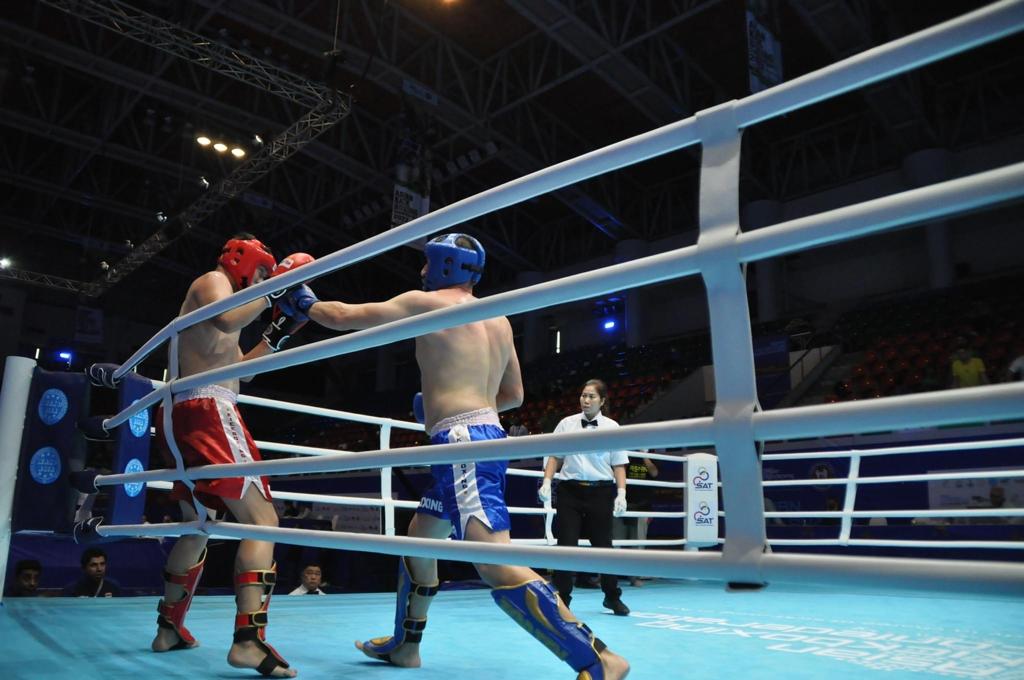Kickboxing is an intense, high-paced sport that demands sudden, potent bursts of energy. This makes it a predominantly anaerobic activity. Contrarily, long-distance running, such as 10K runs, is aerobic. Both exercise types serve different physiological functions. Therefore, it is essential to recognize why long-distance running, while valuable, should not constitute the primary training for kickboxing and discuss superior alternatives.
Appreciating Aerobic and Anaerobic Exercises
Long-distance running, an aerobic exercise, relies on the body's capacity to use oxygen to produce energy over an extended duration. These exercises boost cardiovascular fitness and endurance but are only some practical ways to train for high-intensity, short-burst sports like kickboxing (Poole & Barstow, 2015).
Conversely, anaerobic exercises, such as kickboxing, depend on energy reserves within muscles for brief, high-intensity exertions. These exercises may lead to exhaustion if maintained for extended periods, as energy resources within the body deplete (Polinski et al., 2021).
Highlighting High-Intensity, Short-Duration Training
Given kickboxing's anaerobic nature, training should enhance the body's capacity to handle high-intensity exertions for brief intervals. This is where high-intensity, short-duration exercises become crucial.
For example, running 400 meters at maximum speed is an effective way to develop anaerobic endurance. Such training reflects the energy demands of a kickboxing match more accurately than long-distance running. It aids in building lactic acid tolerance, a crucial element for delaying fatigue onset during high-intensity activities (Trinity, Layec, & Lee, 2014).
The Contribution of Aerobic Training
Kickboxing does not primarily engage the aerobic energy system, but it's essential to recognize its benefits. Aerobic training can augment overall physical fitness, and crucially, a robust aerobic capacity can facilitate recovery during breaks, recovering the athlete faster for subsequent rounds. Therefore, a balanced training regimen incorporating aerobic and anaerobic exercises can benefit kickboxers the most.
Conclusion
While long-distance running has a role within a comprehensive fitness routine, it should not be the primary training methodology for kickboxing. Instead, centering on high-intensity, short-duration exercises such as 400-meter runs can more effectively prepare the body for the anaerobic demands of a kickboxing match. Moreover, long-distance aerobic training can increase bone density and have many health benefits for martial arts athletes like weight control. Nevertheless, maintaining an equilibrium with aerobic training can also assist in overall fitness and recovery.
In addition, do not forget a specific and well-designed warm-up before high-intensity workouts.
References:
Polinski, M., Zhang, Y., Morrison, P. R., Marty, G., Brauner, C., Farrell, A., & Garver, K. (2021). Innate antiviral defense demonstrates high energetic efficiency in a bony fish. BMC Biology, 19(1), 1-21. DOI: 10.1186/s12915-021-01069-2
Poole, D., & Barstow, T. (2015). The critical power framework provides novel insights into fatigue mechanisms. Journal of Exercise Science & Fitness, 13(2), 55-61. DOI: 10.1249/JES.0000000000000045
Trinity, J., Layec, G., & Lee, J. F. (2014). Heterogeneity of blood flow: impact of age on muscle specific tissue perfusion during exercise. The Journal of Physiology, 592(8), 1741-1741. DOI: 10.1113/jphysiol.2014.270694
<a href="https://www.freepik.com/free-photo/young-sportswoman-running-along-foggy-field-nature-copy-space_25855486.htm#query=running&position=45&from_view=search&track=sph">Image by Drazen Zigic</a> on Freepik





